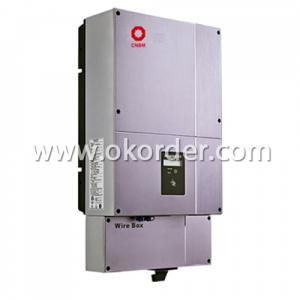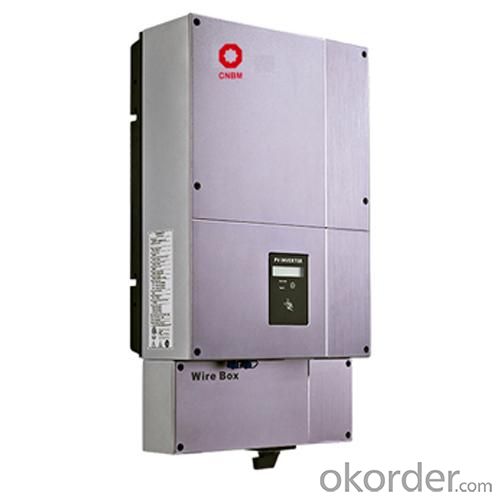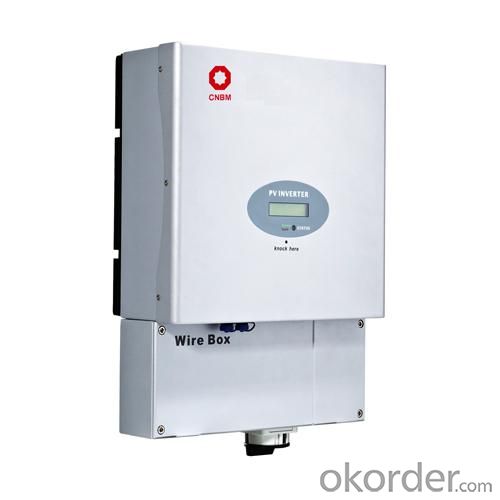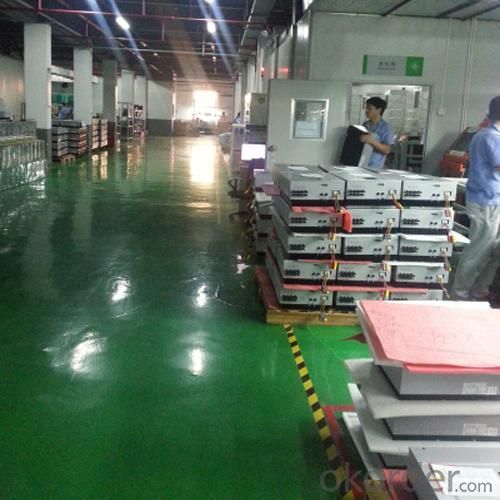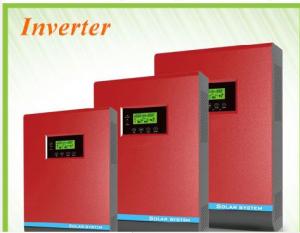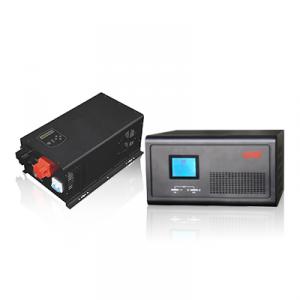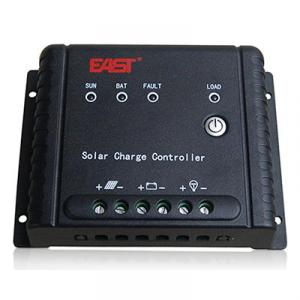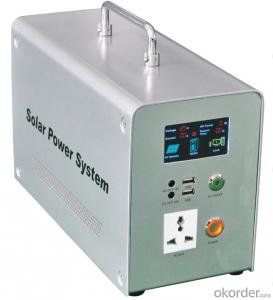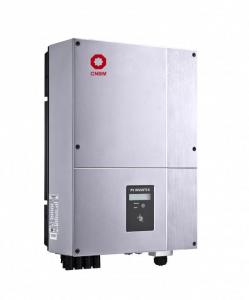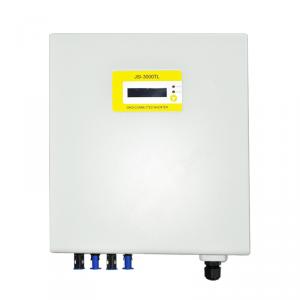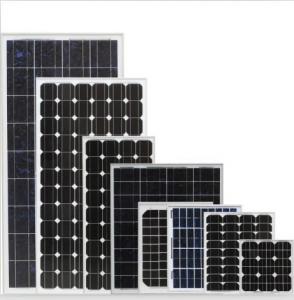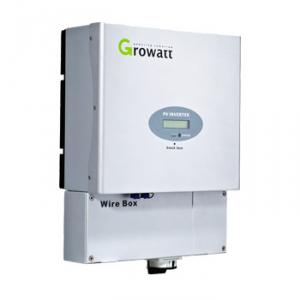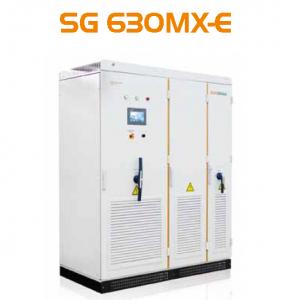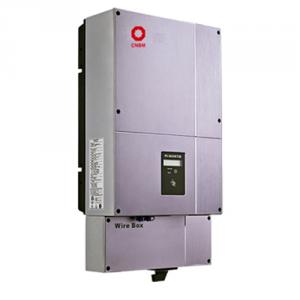400 Watt Grid Connected U.S. Solar Inverter 4200W
- Loading Port:
- Shenzhen
- Payment Terms:
- TT or LC
- Min Order Qty:
- 1 unit pc
- Supply Capability:
- 5000Units/Per Year pc/month
OKorder Service Pledge
OKorder Financial Service
You Might Also Like
Grid Connected U.S. Solar Inverter 4200W
CNBM International Corporation (CNBM International) is the most important trading platform of CNBM Group Corporation, a state-owned company under the direct supervision of State-owned Assets Supervision and Administration Commission of the State Council.
With a R&D team more than 100 engineers,40% of the staff, who has been deeply engaged in the photovoltaic industry for 10 years, CNBM takes the mission to increase the inverter availability and efficiency, putting continuous innovation to make CNBM inverter easier for installation and operation, and more cost-effective for solar plant construction. The full range of CNBM single phase inverters has received VDE, CE, G83/1, G59/2, ENEL2010, VDE4105, C10/C11, AS4777 etc.
Maximum efficiency of 97.8% and wide input voltage range, Internal DCswitch,MTL-String, Sound control,Bluetooth/RF technology /Wi-FiTransformerless,GT topology
The Grid Connected Solar Inverter we can offer is 1.5kw to 20kw.
Introduction of Grid Connected U.S. Solar Inverter 4200W
Maximum efficiency of 97.5% and wide input voltage range
Internal DC switch optional
MTL-String
Sound control
Bluetooth/RF technology /Wi-Fi
Transformerless GT topology
5 years warranty (10years as optional)
Datasheet of Grid Connected U.S. Solar Inverter 4200W
Model | CNBM-3600MTL-US | CNBM-4200MTL-US | CNBM-5000MTL-US |
Input data | |||
Max. DC power | 3800W | 4400W | 5200W |
Max. DC voltage | 600V | 600V | 600V |
Start voltage | 150V | 150V | 150V |
PV voltage range | 100V-600V | 100V-600V | 100V-600V |
Number of MPP trackers/strings per MPP tracker | 2/2 | 2/2 | 2/2 |
Max. input current of the MPP tracker | 12A | 15A | 15A |
Output data | |||
Nominal AC output power | 3600W | 4200W | 4600W |
Max. output current | 18/17.1A/14.8A | 21A/20A/17.2A | 22A/23.7A/20.5A |
AC nominal voltage; range | Default:240V single phase optional:208,240or277 single phase 183-228@208V 211-264V@240V 244-305@277V | ||
AC grid frequency; range | 60Hz;59.3-60.5Hz | 60Hz;59.3-60.5Hz | 60Hz;59.3-60.5Hz |
Phase shift (cosφ) | 1 | 1 | 1 |
THDI | <3% | <3% | <3% |
AC connection | Single phase | Single phase | Single phase |
Efficiency | |||
Max. efficiency | 98% | 98% | 98% |
CEC efficiency | 97% | 97% | 97% |
MPPT efficiency | 99.5% | 99.5% | 99.5% |
Protection devices | |||
Output overvoltage protection-varistor | yes | yes | yes |
Ground fault monitoring | yes | yes | yes |
Grid monitoring | yes | yes | yes |
General Data | |||
Dimensions (W / H / D) in mm | 360/650/188 | 360/650/188 | 360/650/188 |
Weight | 28.3KG | 28.3KG | 28.3KG |
Operating temperature range | -25...+60°C | -25...+60°C | -25...+60°C |
Altitude | Up to 2000m(6560ft) without power derating | ||
Relative humidity | 95% | ||
Consumption: operating(standby) / night | <5W / < 0.5 W | <5W / < 0.5 W | <5 W / < 0.5 W |
Topology | Transformerless | ||
Cooling concept | Natural | Natural | Natural |
Enclosure | Type 3R | Type 3R | Type 3R |
Features | |||
DC connection: | Screw terminal | Screw terminal | Screw terminal |
AC connection: | Screw terminal | Screw terminal | Screw terminal |
display | LCD | LCD | LCD |
Interfaces: RS485/RS232/Bluetooth/RF/Zigbee | yes/yes/opt/opt/opt | ||
Warranty: 10 years / 15 years | yes /opt | yes /opt | yes /opt |
Certificates and approvals | UL1741,UL1998 IEEE 1547, CSA C22.2 No.107.1-1,FCC Part15(Class A&B) | ||
Picture 1: Factory of Grid Connected U.S. Solar Inverter 4200W
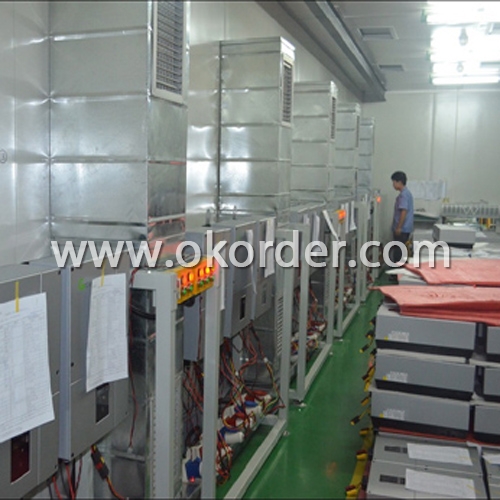
Picture 2: Installation reference of Grid Connected U.S. Solar Inverter 4200W
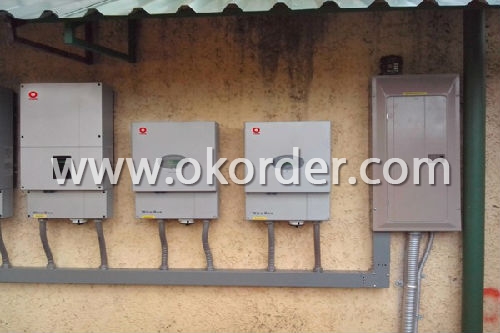
- Q: Can a solar inverter be used with a solar tracker system?
- Yes, a solar inverter can be used with a solar tracker system. In fact, using a solar inverter with a solar tracker system can enhance the overall efficiency and performance of the system. The solar inverter converts the direct current (DC) generated by the solar panels into alternating current (AC) that can be used to power electrical appliances or be fed into the grid. This AC power can then be easily integrated with the solar tracker system to continuously adjust the position and alignment of the solar panels to maximize their exposure to sunlight. Overall, combining a solar inverter with a solar tracker system can optimize the energy generation and increase the overall output of the solar power system.
- Q: What is the role of a solar inverter in voltage support?
- The role of a solar inverter in voltage support is to convert the direct current (DC) generated by solar panels into alternating current (AC) that is compatible with the electrical grid. Additionally, it helps regulate the voltage levels to ensure a steady and consistent supply of electricity to the grid, thereby supporting voltage stability.
- Q: Can a solar inverter be used with a solar-powered swimming pool heater?
- Yes, a solar inverter can be used with a solar-powered swimming pool heater. A solar inverter is responsible for converting the direct current (DC) energy produced by solar panels into alternating current (AC) energy that can be used to power appliances and devices. In the case of a solar-powered swimming pool heater, the solar panels generate DC energy from sunlight, which is then converted into AC energy by the solar inverter. This AC energy can be used to power the swimming pool heater and heat the pool water using solar energy.
- Q: Can a solar inverter be used in harsh environmental conditions?
- Yes, solar inverters are designed to withstand harsh environmental conditions such as extreme temperatures, high humidity, and exposure to dust, dirt, and corrosive elements. They are built with robust materials and undergo rigorous testing to ensure their durability and reliability in challenging environments. Additionally, some solar inverters come with IP65 or higher ratings, indicating their resistance to water and dust ingress, making them suitable for installation in outdoor and harsh conditions.
- Q: Can a solar inverter be used with different types of batteries?
- Yes, a solar inverter can be used with different types of batteries, as long as they are compatible with the inverter's specifications and voltage requirements.
- Q: Can a solar inverter be used for off-grid applications?
- Yes, a solar inverter can be used for off-grid applications. Off-grid systems typically rely on solar panels to generate electricity, and a solar inverter is an essential component that converts the DC power produced by the solar panels into AC power that can be used to power various appliances and devices. This enables off-grid users to harness solar energy and use it to meet their electrical needs in remote or isolated locations where grid connectivity is not available.
- Q: What is the role of a solar inverter in fault ride-through capability?
- The role of a solar inverter in fault ride-through capability is to ensure that the solar power system remains connected to the grid during grid faults or disturbances. The inverter is responsible for detecting the fault and adjusting its operating parameters to ride through the fault without disconnecting from the grid. This capability helps maintain a stable and reliable power supply, as the solar inverter can continue to inject power into the grid even during temporary faults, reducing the impact on the overall system stability.
- Q: How does a solar inverter handle voltage sags and swells?
- A solar inverter handles voltage sags and swells by continuously monitoring the voltage levels of the grid. When it detects a voltage sag (a drop in voltage below a certain threshold) or a voltage swell (a sudden increase in voltage above a certain threshold), the inverter adjusts its operation to compensate for the deviation. It can either decrease or increase the power output to ensure that the electricity being fed into the grid remains within acceptable voltage limits. This helps to stabilize the grid and protect connected devices from potential damage.
- Q: What safety features should a solar inverter have?
- A solar inverter should have several safety features to ensure reliable and secure operation. These features may include overvoltage and undervoltage protection, ground fault protection, temperature monitoring, short circuit protection, and anti-islanding protection. Additionally, it should have built-in surge protection and be compliant with relevant safety standards to safeguard the system and prevent any potential hazards.
- Q: Can a solar inverter be used with solar-powered data centers?
- Yes, a solar inverter can be used with solar-powered data centers. A solar inverter converts the direct current (DC) produced by solar panels into alternating current (AC) that can be used to power electrical equipment, including data centers. By connecting the solar panels to a solar inverter, the generated solar energy can be effectively utilized to power data centers, making them more sustainable and reducing reliance on traditional power sources.
Send your message to us
400 Watt Grid Connected U.S. Solar Inverter 4200W
- Loading Port:
- Shenzhen
- Payment Terms:
- TT or LC
- Min Order Qty:
- 1 unit pc
- Supply Capability:
- 5000Units/Per Year pc/month
OKorder Service Pledge
OKorder Financial Service
Similar products
Hot products
Hot Searches
Related keywords
